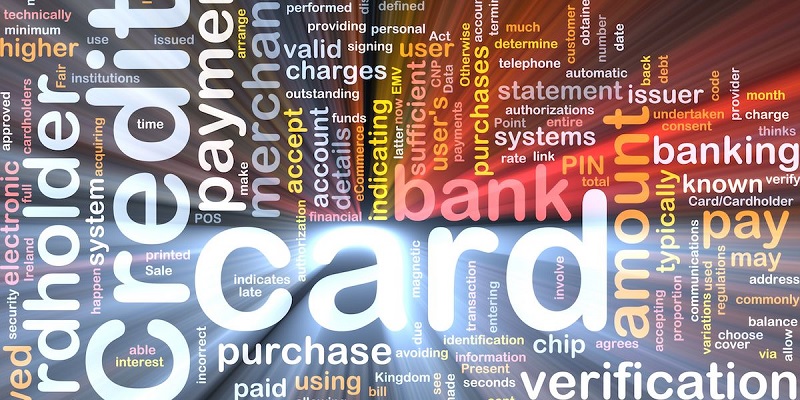 As simple as obtaining and utilizing a credit card seems, there are quite a few important terms to keep in mind. Without proper knowledge of your card, you could experience consequences ranging from lowered credit score or even a higher credit utilization ratio. However, there are different methods and tips to keep your financial health in check.
As simple as obtaining and utilizing a credit card seems, there are quite a few important terms to keep in mind. Without proper knowledge of your card, you could experience consequences ranging from lowered credit score or even a higher credit utilization ratio. However, there are different methods and tips to keep your financial health in check.
To learn more about credit card terms, definitely continue reading below!
 |
 |
Annual Fee
For credit card terms, the annual fee is a yearly charge by a financial institution to the consumer to use the credit card. The number of advantages and benefits associated with your credit card would correlate directly with a potential annual fee. However, note that better cards with a plethora of benefits typically offer a higher annual fee as compared to say, secured or subprime credit cards.
The card issuer will add the annual fee to the customer’s statement. Typically, the fee ranges from $25-$500 annually, depending on the card. Often times, most consumers try to find a credit card with the benefits they want, but without the annual fee.
Annual Percentage Rate (APR)
Annual percentage rate, or APR, is the way of measuring the annual cost a lender charges per year for funds. Typically, this is associated with credit cards, mortgages or loans. APR combines the total amount of interest payable and the cost of fees and charges averaged over the term of the loan and expressed as a percentage.
However, in the case of credit card terms, there are several APRs. This would include APR on purchases, balance transfers, cash advances as well as any penalties/defaults. At the end of a grace period, the APR or interest rate is charged.
Credit Limit
The credit limit is the maximum amount you are allowed to spend on a credit card. Technically, you can spend more than the allowed amount. However, this would incur a heavy penalty. Additionally, note that each individual’s credit limit is determined by several factors. Your income level, overall financial condition and credit history would just be a few criteria financial institutions look into.
If you have a short credit history, your credit limit will likely be low. However, if you have at least 3 well-established credit lines, your limit will be higher. Furthermore, note that overtime, your credit limit might automatically raise. This could mean that financial institutions trust that you can handle your credit ratio responsibly.
On the other hand, if you go over your limit, you may have to pay an overdraft fee. The penalty APR associated may even be applied to your card. However, sometimes, you can opt-in or out of over-limit charges and fees.
Credit Score
A credit score comes down to one word, Creditworthiness. This indicates how likely you will pay the money back that has been lend to you on your credit cards. Credit scores are based on a variety of financial data. In other words, everything about a credit card can affect your score. The number of cards you have, your payment history as well as debt history will all have an impact.
Additionally, higher credit scores are typically correlated with better creditworthiness. Financial institutions define individuals with a higher score to have a lower credit risk. This means qualified individuals will have a better selection of premiere credit cards offering lower rates and better card benefits.
Therefore, it is recommended you utilize your credit cards carefully. Each decision you make with them could potentially impact your credit score. Credit card terms such as this would then relate to other areas of your life such as your APR rate on loans and mortgages.
Due Date
This is the date you are required to make a minimum payment to the credit card company. Typically, it is due at 5 p.m. on the due date. However, some companies may have a late evening deadline. Due date correlates with your credit score and creditworthiness. If you miss a payment or pay late, you will incur a late fee. With this, you will receive an increase in APR and credit bureaus will assess the impact.
Grace Period
A grace period is the period of time creditors give borrowers to make payments before incurring a late charge of defaulting a loan. During this time, interest is not assessed after a purchase is made. Depending on the credit card, there may only be a grace period on purchases if you don’t carry a balance on your credit card.
Additionally, note there are two types of grace periods. The first type refers to a period of time beyond the due date that the lender gives customers to make their payments. The second applies to a period of time when a creditor does not charge interest on the account balance.
Late Payment Fee
If you don’t pay at least your minimum payment by the due date, a late payment fee is assessed. Depending on the card, the fee ranges from $15-$37 and is based on the size of your balance. How late payment is can have a negative impact on a person’s credit score and, indeed, their ability to obtain credit at a favorable rate.
For small balances, it is a large percentage of your balance. If you are late making several payments or if one payment is more than 60 days late, your APR will flip over to the penalty rate which is between 27%–30%.
Minimum Payment
A minimum payment is the lowest amount owed on a debt by a set due date without incurring penalties. You can choose to utilize this while remaining in good standing with your card company. Typically, this is between 1%-3% of your outstanding credit card balance. If you have a relatively low balance on your credit card, you may be assessed a payment that is a percentage of your outstanding balance or $25 whichever is higher.
Revolving Balance
Revolving credit on a credit card refers to the credit limit a consumer has that has been used and not repaid. The unpaid balance is then carried over for one month to the next. However, you would have to pay interest (APR) every day thereafter because you did not pay the amount off at the end of the previous month. A high revolving balance may suggest that the borrower is relying too much on credit. This is why is it imperative for your credit score to keep a revolving balance to a minimum. However, if you pay your credit card balance in full every month, you will not have a revolving balance.
Security Code (CVV)
In credit card terms, the security code, or card verification value (CVV)– on your credit or debit card is used for online transactions. The whole point of the CVV code is to ensure another level of security for the owner of the card. This code protects you from credit card skimmers. Additionally, since the CVV code does not have a magnetic stripe on the card, a skimmer cannot pick it up. For most credit cards, this is printed to the right of the magnetic strip. However, on an American Express card, it is presented on the front of the card.
Conclusion
Maintaining a good credit score can be quite stressful sometimes. Through your daily lives, credit card payments and mortgages/loans, keeping your personal finances in good health is definitely something that should be on the top of your priority list. However, with the right knowledge of credit card terms, you could definitely better your credit score in the long run.
Although avoiding a late payment or maintaining a low revolving balance might be hard and daunting for some, the same truth remains. It is imperative for your financial health to keep all these credit card terms in check. For other methods on how to increase your credit history, check out our list of bank rates, investment accounts, and even bank promotions.




